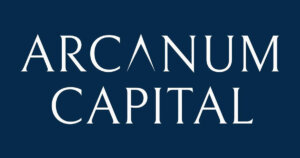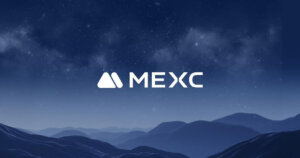 The dilemma of interoperability & trustlessness: Genuine or apparent?
The dilemma of interoperability & trustlessness: Genuine or apparent? The dilemma of interoperability & trustlessness: Genuine or apparent?

Photo by Matthew Ansley on Unsplash
There are times when we have two choices (or maybe more) that are mutually exclusive. Choosing one implies forgoing the other, as we can have them both at the same time. To take a simple example, suppose you are invited to two events happening simultaneously in different venues. Despite being equally interested in both, you can only attend one unless you are a clone in the Brave New World. The situation depicted here is a dilemma—the concept has Greek origins, where di means two, and lemma means premises, or roughly, choices.
Dilemmas have troubled philosophers deeply and forever because genuine dilemmas are practically unresolvable, presenting pertinent challenges to our conceptual apparatus. Besides appearing in philosophical contemplations, dilemmas are commonplace in our day-to-day experiences, including the world of decentralized technologies. However, some dilemmas are only apparent, and we can resolve them either by re-calibrating our viewpoint or incorporating new knowledge.
In this article, we analyze the situation concerning the interoperability of decentralized systems vis-a-vis their trustlessness. Since both are equally necessary, although each obstructs the other’s actualization, we have a classic dilemma. Presently, then, we shall determine whether it is genuine. If it is so, then we are in trouble, but if not, then what is the solution?
Trustlessness: The Lifeblood of Decentralized Systems
Despite its shortcomings, Bitcoin has proven that trustless networks are indeed possible, not just in theory but also in reality. By inventing functional peer-to-peer money and evoking the fundamentals of decentralization, Satoshi Nakamoto taught us to not trust but verify. That too, with good reason.
The need to trust corruptible third-party intermediaries is the major problem with centralized systems, enabling censorship and manipulation. The problem becomes particularly severe in finance, putting the very basis of an individual’s freedom at stake. Therefore, decentralized financial systems must necessarily be trustless to become censorship-resistant and minimize the risks of manipulation.
On this note, however, we must address the common misunderstanding that trustlessness naturally follows from decentralization. In his article, The Meaning of Decentralization, Vitalik Buterin has outlined three main types of decentralization: architectural, political, and logical. For our purpose, the crucial implication is that decentralization is a matter of degrees. An architecturally decentralized network may involve political centralization, political decentralization may coexist with logical centralization, and so on.
Permissioned blockchain networks, for instance, may be architecturally decentralized due to their globally distributed nodes but not trustless. Members must trust the consortium or enterprise or whoever it is that grants permissions for any purpose whatsoever. Following this example, we can deduce that a decentralized system may involve points of trust, which are, in fact, points of failure. On the contrary, though, an optimally trustless system is necessarily decentralized and cannot be otherwise.
Interoperability & The Challenge for Trustlessness
Grounded in deep philosophical and theoretical underpinnings, Decentralized Finance (DeFi) is ultimately a space to foster new-age business processes. As we all know, the vision is to disrupt and transform the intermediary-ridden sectors, enhancing their performance and scope. Simultaneously, there is the focus on developing user-centric systems, and the sector’s current market capitalization is already over $59 billion. DeFi’s prospects are bright, and it will meet its long-term goals, but it must overcome certain limitations to do that. Mainly, this concerns interoperability.
Existing DeFi markets are highly fragmented, with multiple isolated protocols and networks, whereas communication and collaboration are essential to successful businesses. The need to onboard multiple platforms hampers the end-user’s experience, while investors have to scurry from protocol to protocol. Consequently, stakeholders, especially the amateurs, either fall out or face substantial losses. To resolve these issues, DeFi systems must become interoperable, which presents an additional set of challenges.
In the simplest of terms, a smart contract has interoperability when it can have frictionless interactions with other smart contracts. For instance, the outcome of one contract may serve as the input for another, triggering some on-chain transaction in the latter’s ecosystem. However, the ordinary solutions for inter-blockchain communication—bridges or synthetic assets—often negate the system’s trustlessness by introducing identifiable points of failure. Nevertheless, cross-chain ecosystems like Polkadot are resolving this crisis by embedding interoperability while retaining trustlessness. To this end, the platform leverages innovations in sharding, parachains, and Byzantine Fault Tolerance consensus, among other elements.
Looking Beyond Inter-Blockchain Communication
Interoperability is much more than blockchains communicating with each other to share processes or data. As such, permissionless blockchains need some degree of isolation from the off-chain world, relying upon algorithms rather than intermediaries. However, to ensure the broadest scope, smart contracts often require data from external and off-chain sources. From insurance settlements to the delivery of retail goods, this comprises diverse use-cases.
Oracles serve the purpose of connecting on-chain smart contracts to the off-chain world. Because blockchains are deterministic and irreversible, the oracle’s integrity is pivotal to trustlessness. Involving multiple sources of truth is a possible solution, but relying upon centralized oracles to relay the information is self-defeating. Moreover, the data sources may collude or be corrupted, which the oracle can do little to verify.
At this point, the dilemma that we began with appears genuine. But before arriving at a conclusion, we must consider another alternative—decentralized oracle networks. Instead of one, blockchains can use multiple oracles for data aggregation and communication, removing the single-point-of-failure and reducing the probability of compromise. Decentralized oracles are anonymous as well and mitigate the risk of collusion among external data providers. Additionally, they return multiple answers to each query, which enables verification through majority consensus. Coupled with resilient consensus protocols, such as Polkadot’s, the verifiability of decentralized oracles resists Sybil attacks, and above all, minimizes trust.
Finally, therefore, we can safely assert that the dilemma between interoperability and trustlessness is merely apparent. The problem is undoubtedly challenging, but its solution is both possible and feasible. Platforms like Witnet and DotOracle, among others, are already resolving the crisis of interoperability while upholding trustlessness. Further innovations will follow in DeFi’s journey into the future, empowering the domain to take full flight.




 CryptoQuant
CryptoQuant 












































































